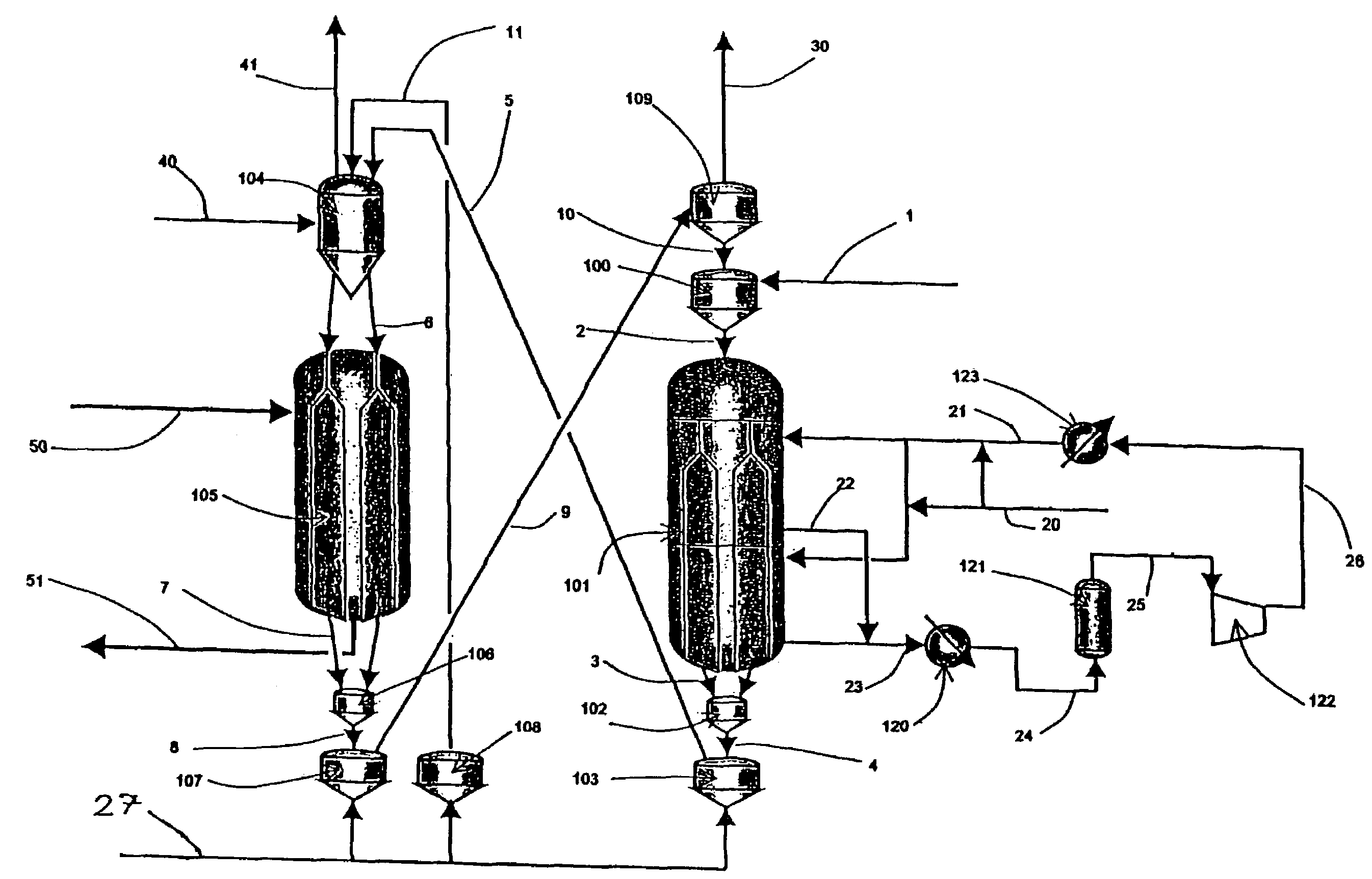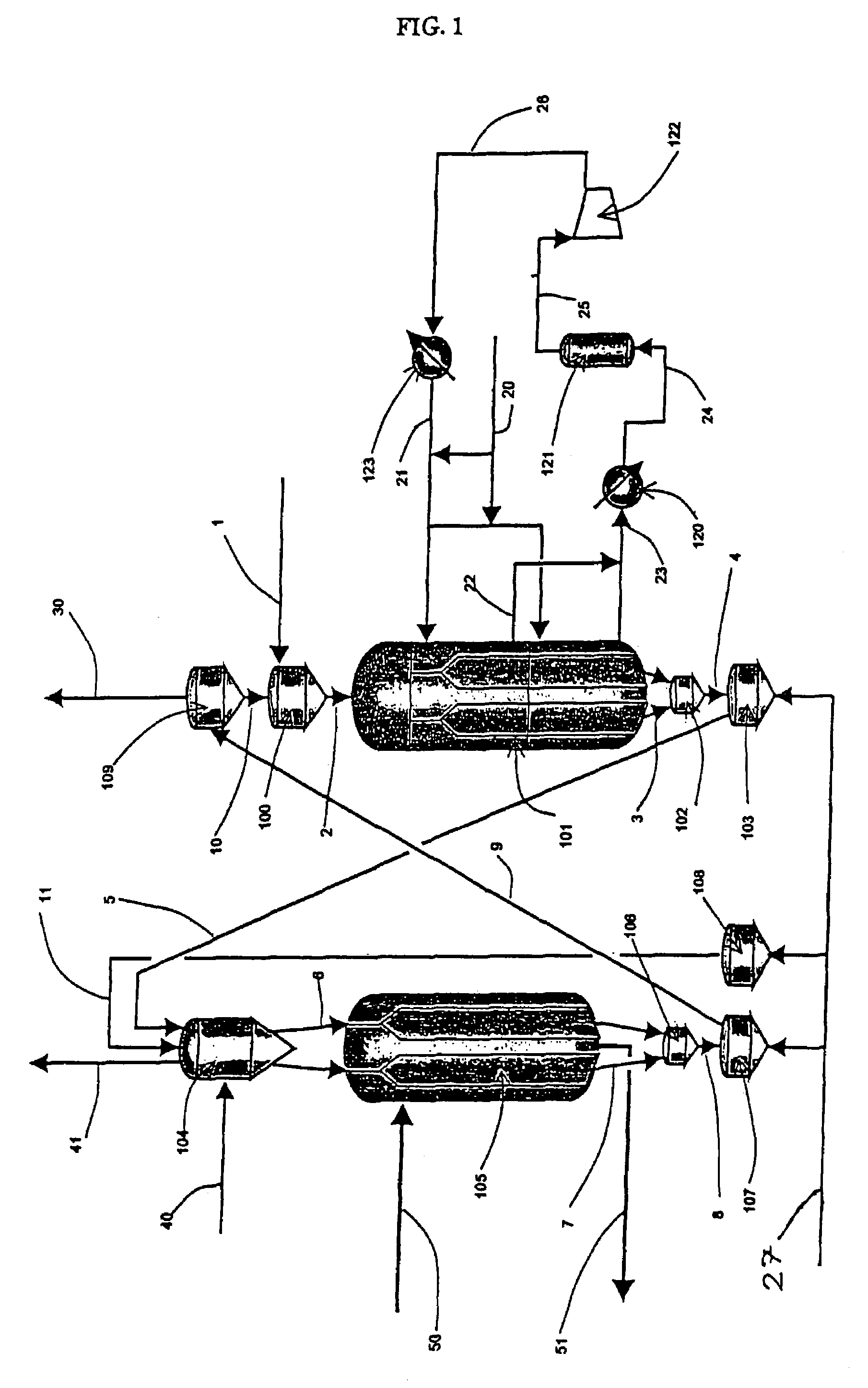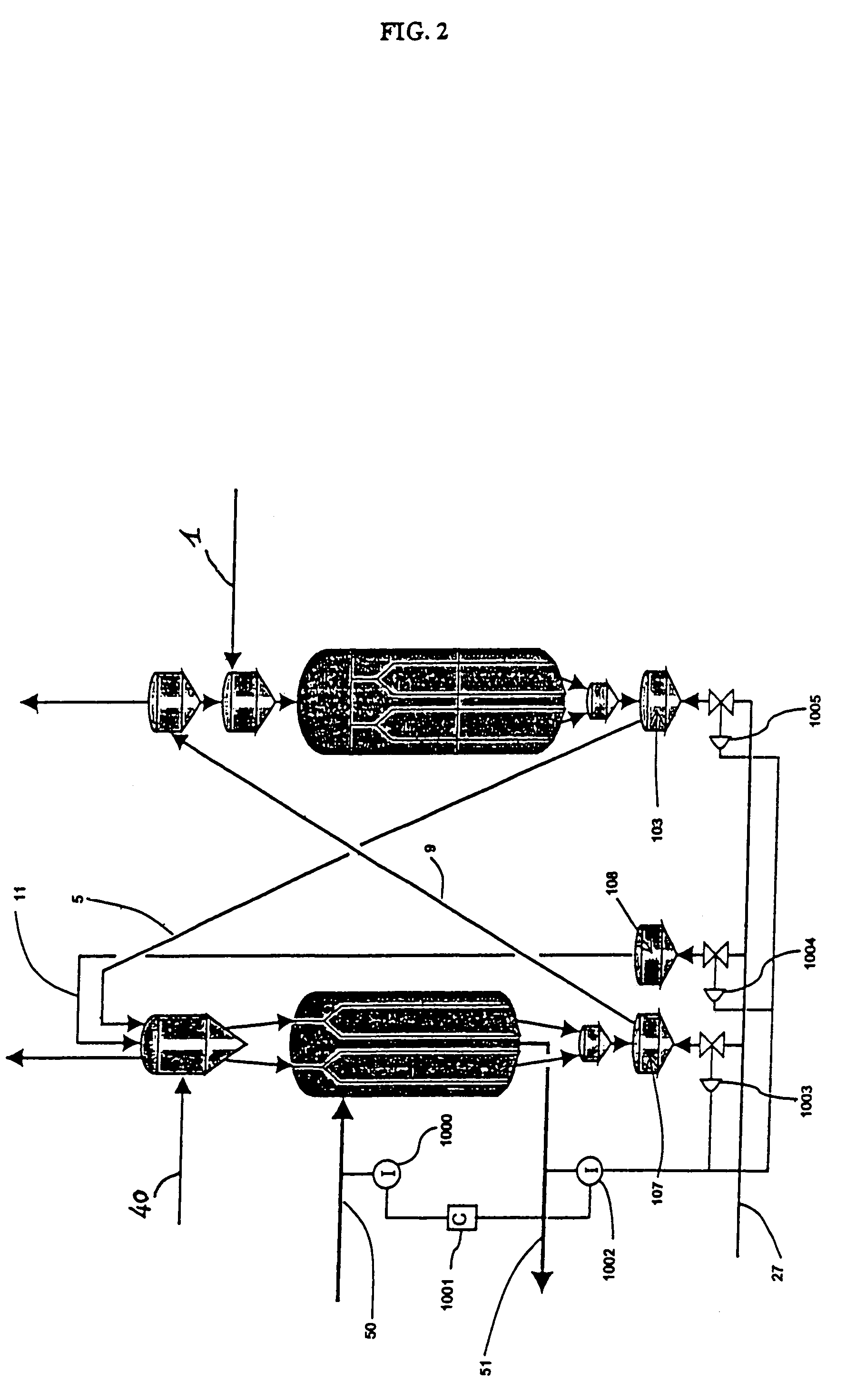Moving bed process for producing propylene, recycling a fraction of used catalyst
a technology of propylene and moving bed, which is applied in the direction of hydrocarbon oil cracking process, thermal non-catalytic cracking, etc., can solve the problems of reducing the yield of the moving bed, and reducing the mean overall yield
- Summary
- Abstract
- Description
- Claims
- Application Information
AI Technical Summary
Benefits of technology
Problems solved by technology
Method used
Image
Examples
example 1
Prior Art
[0088]In this prior art example, the feed to be treated was constituted by 100% isobutene.
[0089]The feed was injected into a reactor functioning in moving bed mode.
[0090]The catalyst used was a CBV1502 containing 80% MFI type zeolite having a Si / Al ratio of 75. The catalyst was regenerated in a regeneration zone functioning at a temperature of 823K and at a pressure of 0.10 MPa.
[0091]The cycle time for the catalyst was 48 hours. The reaction was carried out at a temperature of 853K and at a total pressure of 0.12 MPa. The liquid space velocity was 4.5 h−1.
[0092]The compositions obtained at the outlet from the reactors are shown in Table 1.
[0093]
TABLE 1Composition at outlet from moving bed with no used catalyst recycle.CompoundComposition (wt %)Methane1.92Ethylene15.30Ethane1.00Propylene24.95Propane5.22Isobutane4.02Isobutene5.211-butene2.60Butane2.50Trans-2-butene3.19Cis-2-butene2.403-methyl-1-butene0.14Isopentane0.691-pentene0.232-methyl-1-butene0.71Pentane0.24Trans-2-pente...
example 2
In Accordance with the Invention
[0096]In this example, the feed to be treated and the catalyst were the same as those used in Example 1 (prior art). 49% by weight of the flow of used catalyst was directly recycled to the head of the moving bed reactor mixed with a complementary 51% of regenerated catalyst. The catalyst was regenerated under the same conditions as those in Example 1 (prior art).
[0097]The compositions obtained at the outlet from the reactors are shown in Table 2.
[0098]
TABLE 2Composition at outlet from moving bed with used catalyst recycle.CompoundComposition (wt %)Methane0.73Ethylene9.61Ethane0.36Propylene28.97Propane2.08Isobutane2.15Isobutene12.981-butene6.38Butane1.80Trans-2-butene7.90Cis-2-butene5.993-methyl-1-butene0.29Isopentane0.341-pentene0.482-methyl-1-butene1.44Pentane0.16Trans-2-pentene1.19Cis-2-pentene0.672-methyl-2-butene2.59Trans-1,3-pentadiene0.06Cis-1,3-pentadiene0.06Cyclopentene0.22Cyclopentane0.40Others (C6+)13.16Total100
[0099]The performance of the u...
example 3
Prior Art
[0102]In this prior art example, the feed to be treated was constituted by 100% isobutene.
[0103]The feed was injected into a reactor functioning in moving bed mode.
[0104]The catalyst used was a CBV28014 containing 30% of MFI type zeolite having a Si / Al ratio of 140. The catalyst was regenerated at a temperature of 823K and at a pressure of 0.10 MPa.
[0105]The cycle time for the catalyst was 48 hours. The reaction was carried out at a temperature of 783K and at a total pressure of 0.12 MPa. The liquid space velocity was 1.7 h−1.
[0106]The compositions obtained at the outlet from the reactors are shown in Table 3.
[0107]
TABLE 3Composition at outlet from moving bed with no used catalyst recycle.CompoundComposition (wt %)Methane0.10Ethylene3.63Ethane0.08Propylene23.61Propane1.46Isobutane2.19Isobutene14.081-butene6.71Butane1.51Trans-2-butene9.97Cis-2-butene7.303-methyl-1-butene0.47Isopentane0.671-pentene0.702-methyl-1-butene2.72Pentane0.29Trans-2-pentene2.06Cis-2-pentene1.102-methy...
PUM
| Property | Measurement | Unit |
|---|---|---|
| particle size | aaaaa | aaaaa |
| temperature | aaaaa | aaaaa |
| temperature | aaaaa | aaaaa |
Abstract
Description
Claims
Application Information
 Login to View More
Login to View More - R&D
- Intellectual Property
- Life Sciences
- Materials
- Tech Scout
- Unparalleled Data Quality
- Higher Quality Content
- 60% Fewer Hallucinations
Browse by: Latest US Patents, China's latest patents, Technical Efficacy Thesaurus, Application Domain, Technology Topic, Popular Technical Reports.
© 2025 PatSnap. All rights reserved.Legal|Privacy policy|Modern Slavery Act Transparency Statement|Sitemap|About US| Contact US: help@patsnap.com



